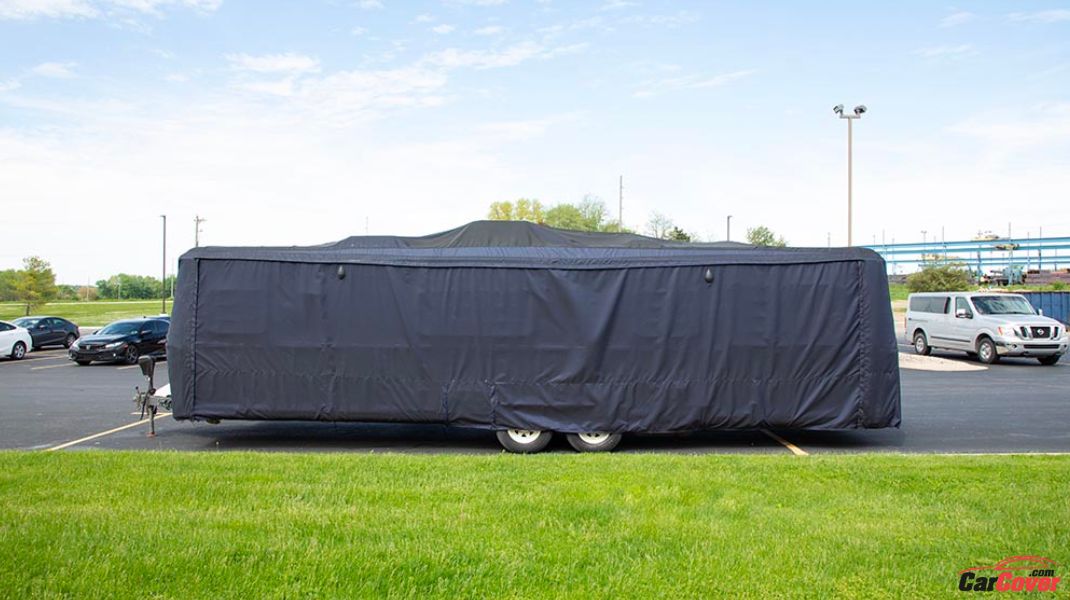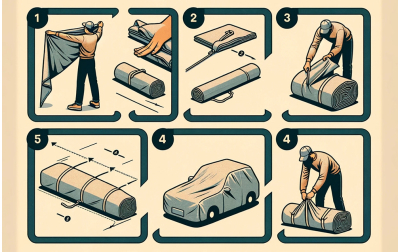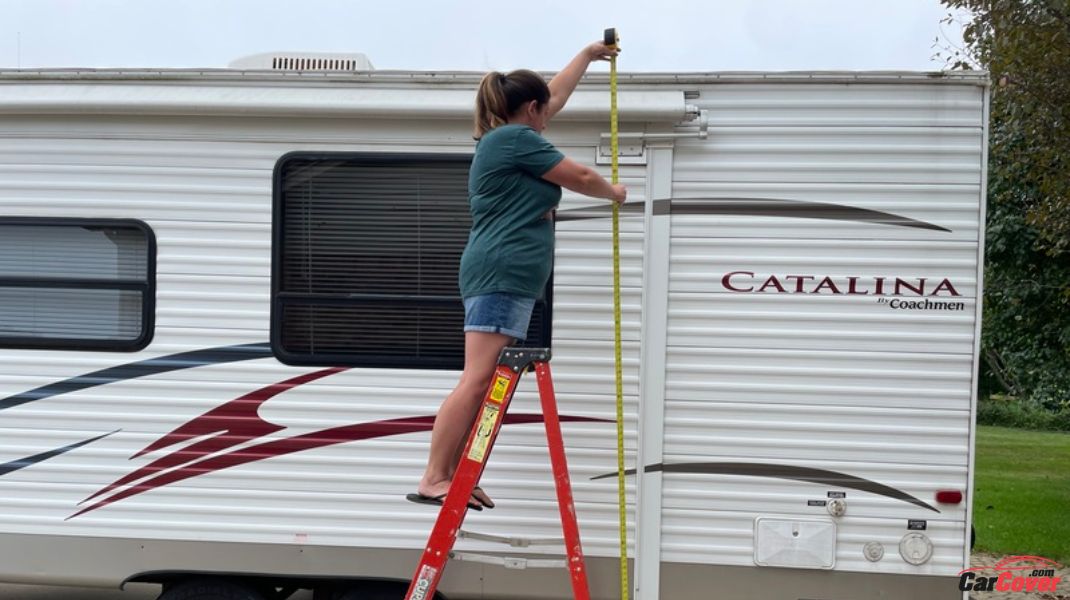
How to Measure your RV for an RV Cover
As an RV owner, you want to get the most out of your investment. To this end, it is important to take steps to protect it from the natural elements when you know it will be sitting for an extended period of time. RV covers provide damage protection from things such as UV rays, wind, rain, and snow. They also prevent bird droppings, dirt, dust, and sap from building up and damaging your recreational vehicle's finish. Covers are designed to be water-resistant to rain and snow, yet breathable to reduce the amount of moisture and condensation that accumulates beneath the cover, keeping mold and other moisture-loving threats at bay. In order for a cover to properly do its job though, it is crucial to have the right size for the type of RV that you own.
Surprisingly, wind is the biggest threat to the continued integrity of your new RV cover. For example, if the cover is too big, it will billow when experiencing sustained wind conditions, rubbing against the RV, causing wear and tear to the cover's fabric. On the other hand, if the cover is too small, attempting to pull it over the edges of the RV during installation or removal could end up tearing right through the fabric. So, making sure the cover you order fits as tightly as possible without being too tight is key to increasing both the lifespan of the cover and the level of protection it provides.
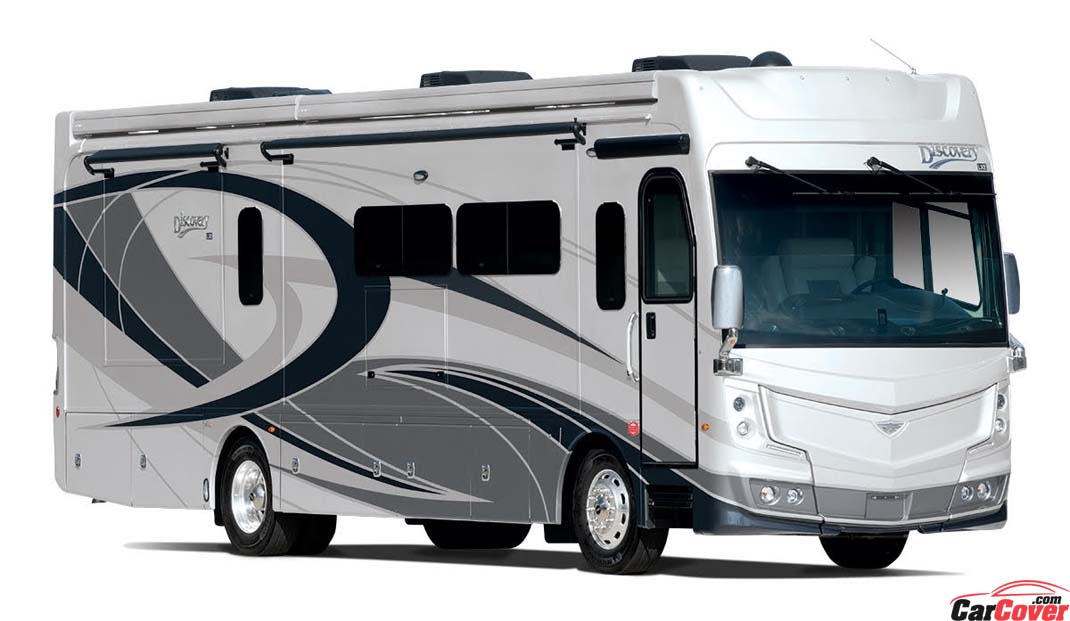

You may be asking: Why don't I just look at the owner's manual instead of measuring it myself? Well, there may be measurement discrepancies between the actual RV in front of you and what the manufacturer's manual specifies, which could result in ordering the wrong size cover. Not only is returning the cover time-consuming (who likes to return purchases?!), but the task of repacking the cover once removed from its vacuum-sealed packaging is a quest of its own. Before ordering a cover, then, properly measuring your recreational vehicle is a must, even if you have the manufacturer's specifications right in front of you!
Today, we are looking at how to measure for the kind of cover that is secured with cinch ropes and straps, covering the entire body of the RV coach. These kinds of storage covers are typically designed according to the specific type of recreational vehicle (Class A, B, C, etc.), where width and height measurements are quite common and consistent. In this case, length is the key measurement! That said, for the sake of thoroughness, it is better to jot all three dimensions down and double-check your measurements with those of the cover you are looking at.
You could see Why Should You Cover Your RV?
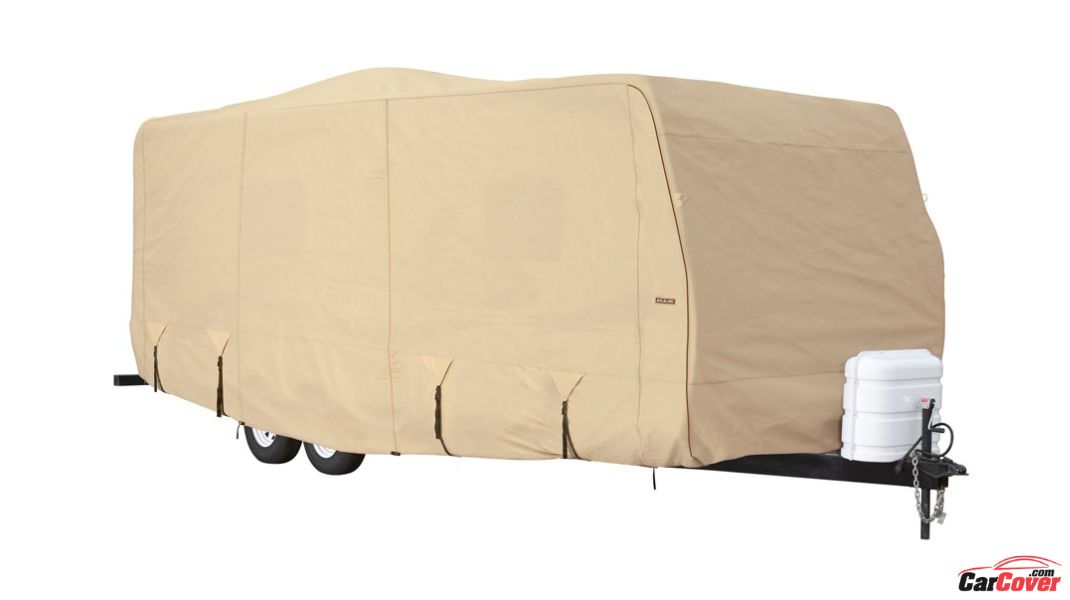

Now that we've covered the importance of purchasing a cover and why it's a great idea to measure your RV before ordering one, let's move on to how to actually measure a recreational vehicle so that you order the right size cover the first time around.
The first part of this blog contains general instructions for measuring each of the three dimensions (length, height, and width). In the second part, you will find particular instructions for how to measure both the length and height of the following kinds of recreational vehicles: Class A, Class B, Class C, Fifth Wheel, Travel Trailer, Truck Camper, Folding Popup Camper, and TearDrop Camper.
Let's get started!
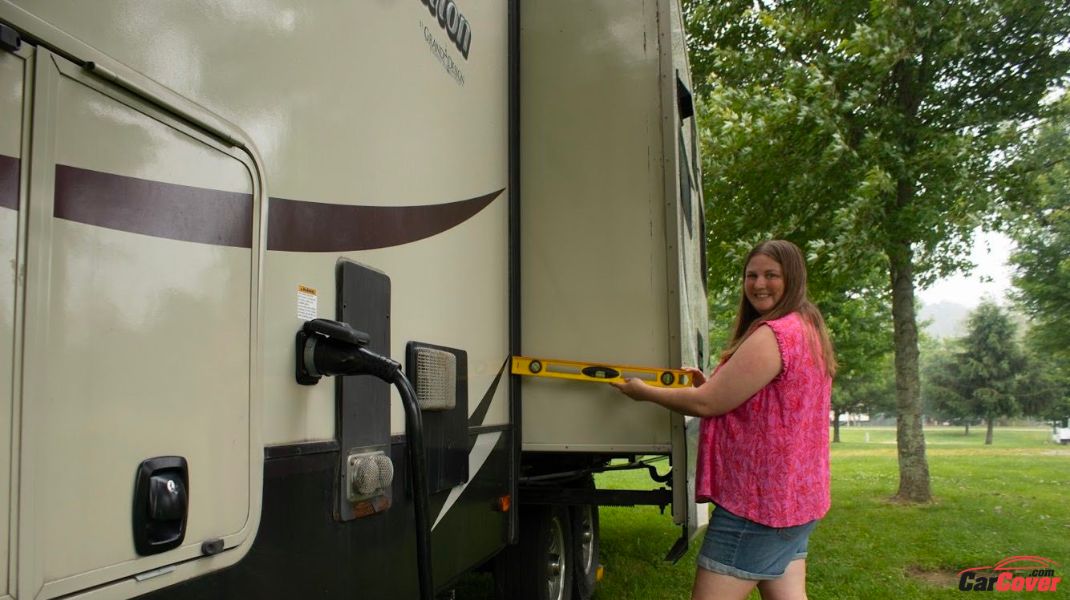

How to Measure Part I: A General Guide
The standard system of measurement used is always feet and inches (n' n''). When ordering a cover, manufacturers and suppliers provide length ranges for you to initially choose from (e.g., 41' – 44' or 26'1" – 28'6"), but height and width specifications can be found if you want to confirm these before purchasing the cover.
- Length: Measure the longest point from the front to the rear of the RV. Always include bumpers, the spare tire and the ladder (specific instructions for each type of RV are given below). Hitches and tongues are not included. Propane tanks are not usually covered either but covers for these are available separately.
- Height: Measure the RV sidewalls, from the top of the roofline down toward the outside frame. Do not stop at the top of the wheel well! Exclude any roof-mounted accessories, vents, and A/C units, as well as ground clearance.
- Width: Stand facing the front of your RV, then measure from side to side at the widest point. Exclude mirrors and awnings.
- Important Tip: if your length measurement is on the cusp of the higher end of the length range for the cover you have your eye on, there is no need to go up to a bigger size. This is because RV covers are made with extra fabric. The extra fabric makes it easier to gather and fold the cover under when tightening the cinch ropes and straps, and it ensures that RVs on the longer side of the scale still have complete coverage. Additionally, covers are made a little bigger to account for any roof-mounted accessories, vents and A/C units. Going with the next size up could mean having a cover that is much too big!
For example: Say your RV measures 28'6", and your choice of length ranges is between 26'1" – 28'6" or 28'7" – 30'1", you will want to order the smaller version of the cover (26'1" – 28'6"). However, if your RV length measures 28'7", then you will want to order the larger version (28'7" – 30'1").
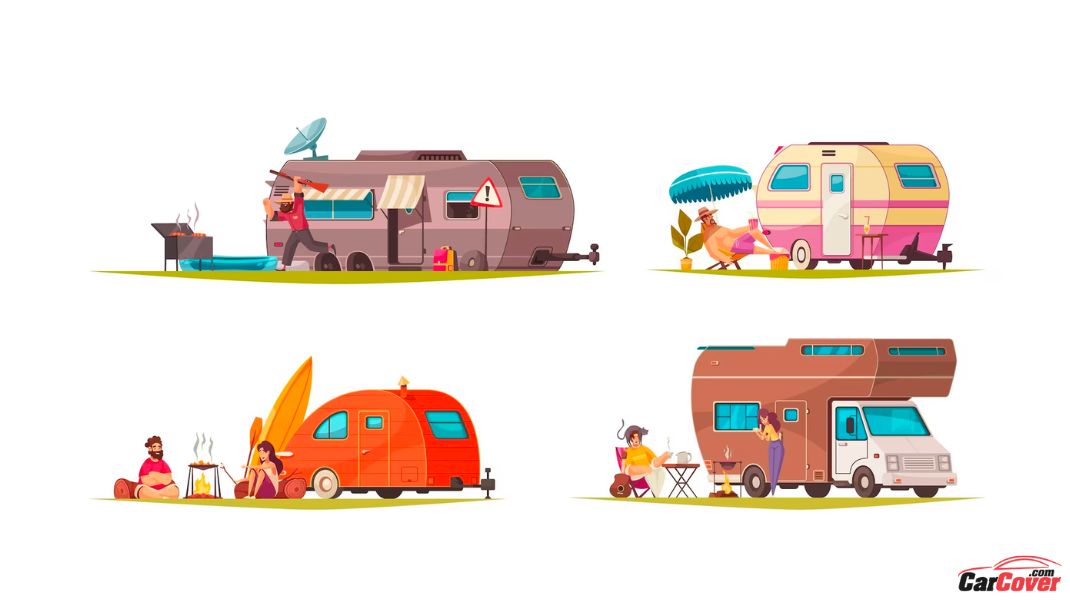

How to Measure Part II: A Specific Guide
Class A, B & C
Length: Measure the longest two points from the front to the rear of RV, including bumpers, spare tire and ladder. For Class A motorhomes, measure to the front of the bumper or bunk area, whichever is the furthest point.
Height: Measure the highest point of the RV sidewalls from the top of the roof all the way down to the outside frame, excluding ground clearance, roof-mounted accessories, vents, and A/C units. With Class B vans, be sure to include bubble height which is taken by measuring from the very top of the van to the natural roofline of the van.
Class A RV
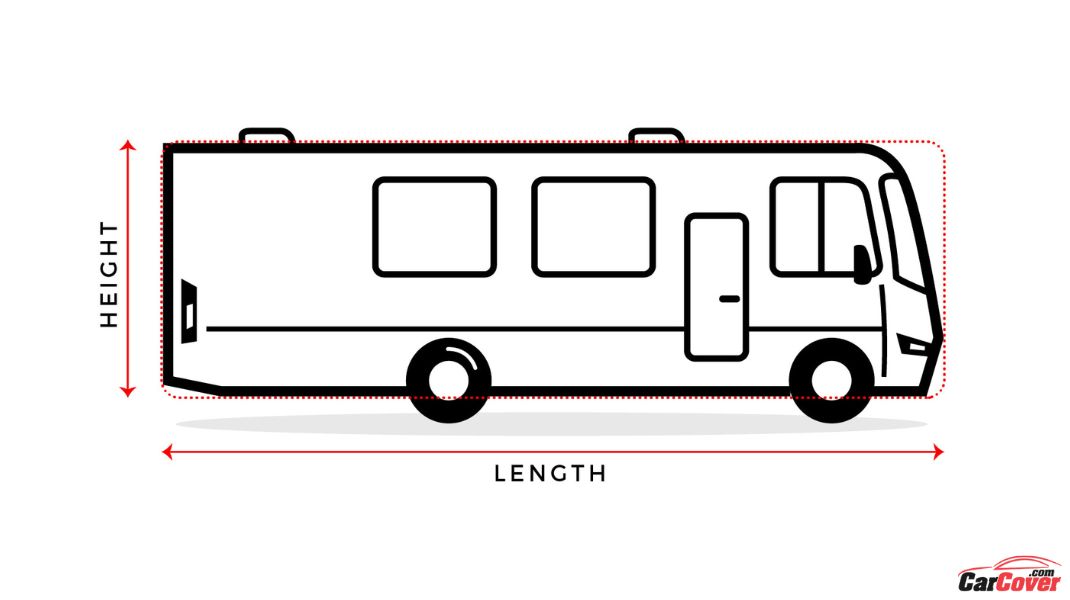

Class B RV
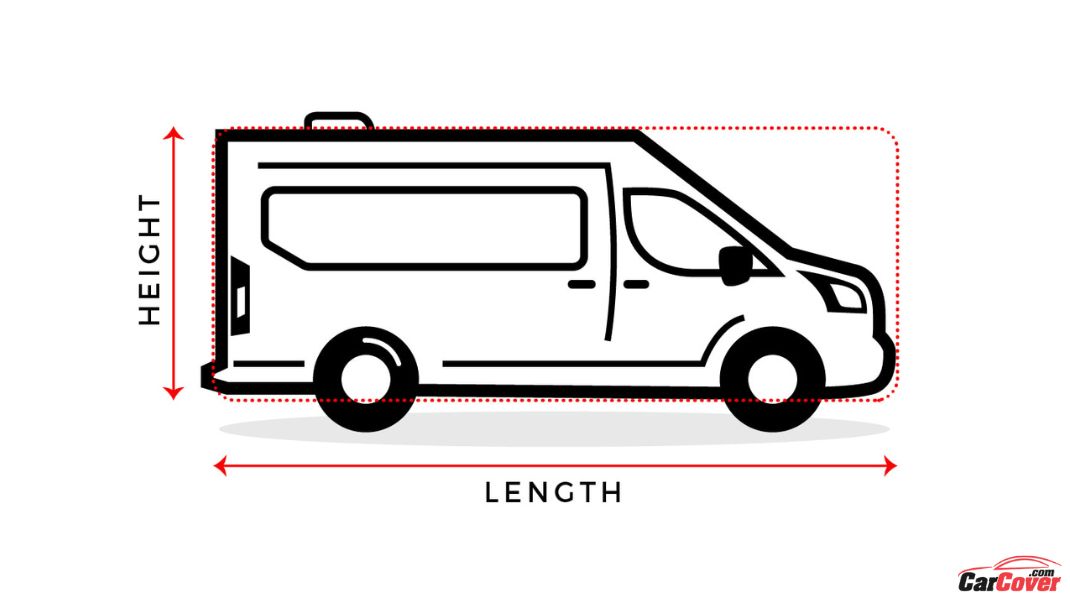

Class C RV
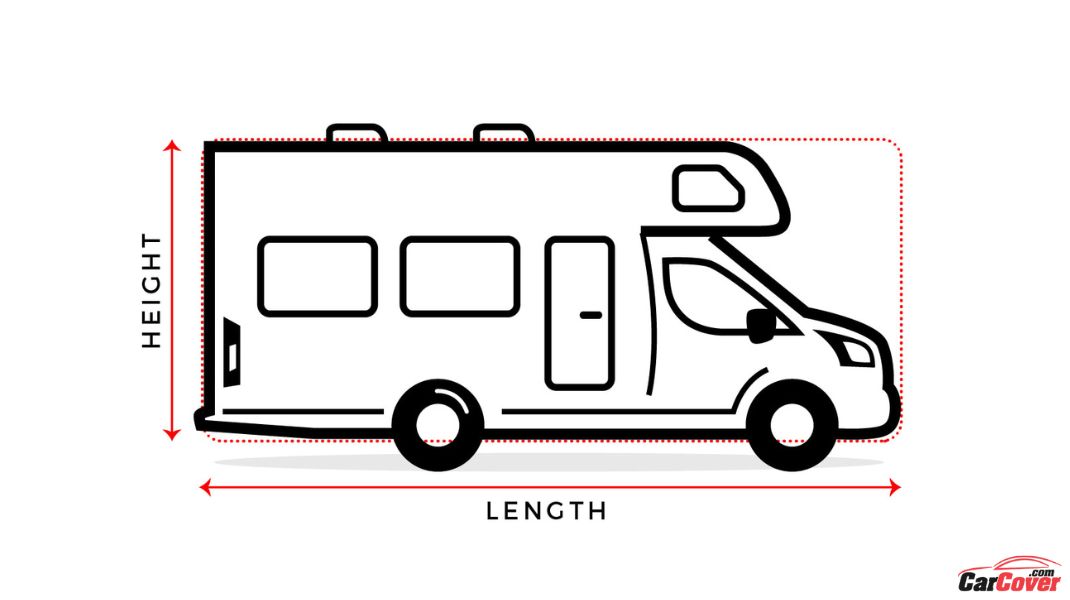

Fifth Wheel Trailer
Length: Measure the longest point from the front to the rear of the trailer. For a fifth wheel, measure from the rear including bumper, spare tire and ladder, until the furthest point on the nose of the trailer coach. Exclude the hitch.
Height: Measure the trailer sidewalls at the highest point of the roofline down to the outside frame, excluding ground clearance, roof-mounted accessories, vents, and A/C units. Remember, don't stop at the top of the wheel well!
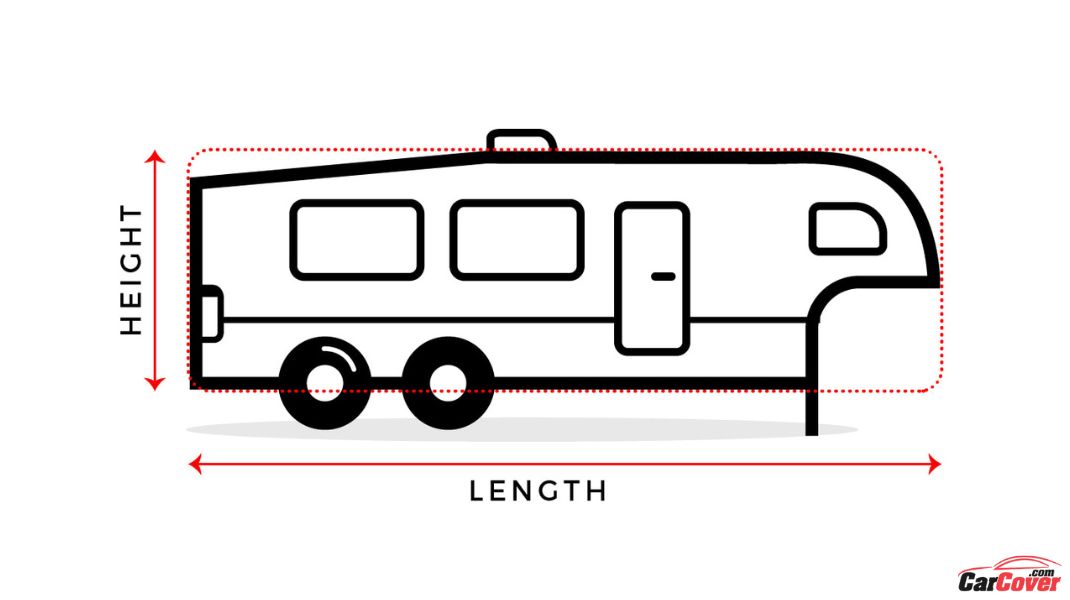

Travel Trailer
Length: Measure the longest two points from the front to the rear of the trailer, including bumpers, spare tire, and ladder, but excluding the hitch and tongue of the trailer.
Height: Measure the trailer sidewalls from the very top of the roofline down to the outside frame. Exclude ground clearance, roof-mounted accessories, vents, and A/C units.
Maybe you're interested in Top 5 Travel Trailers for 2023
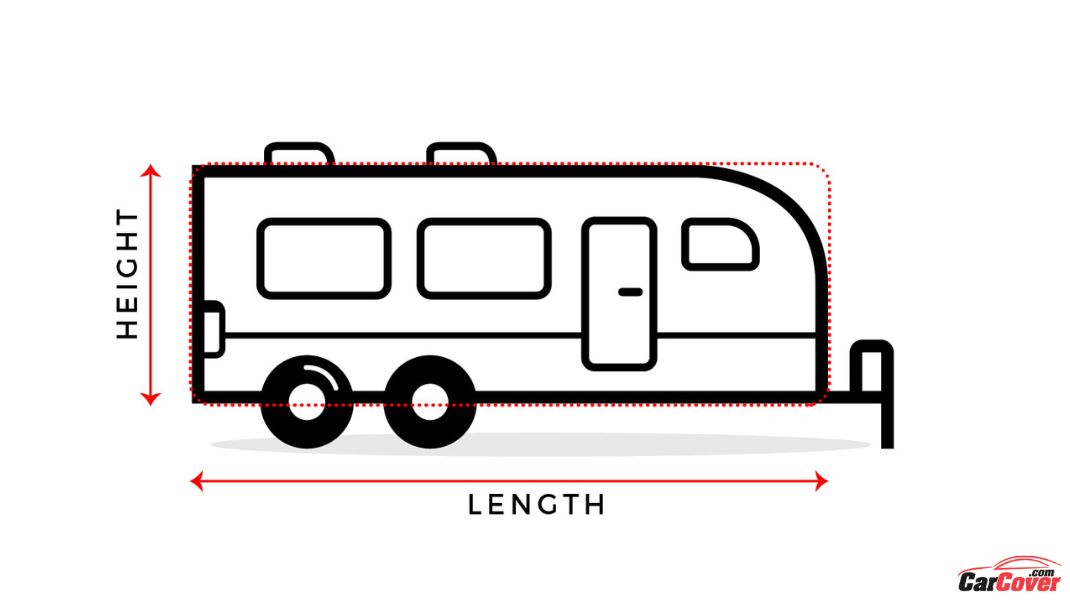

Truck Camper
Length: Measure from the furthest two points of the camper, including bumpers and ladder. If the nose of the camper is rounded, take the measurement from the furthest point forward on the nose.
Height: Measure the camper sidewalls from the highest point of the roofline down to the outside frame. Exclude ground clearance, roof-mounted accessories, vents, and A/C units.
If total length of you truck camper is under 216", you will need Truck Camper 8' to 10'
If total length of you truck camper is under 238", you will need Truck Camper 10' to 12'
Maybe you're interested in this product: Truck camper cover
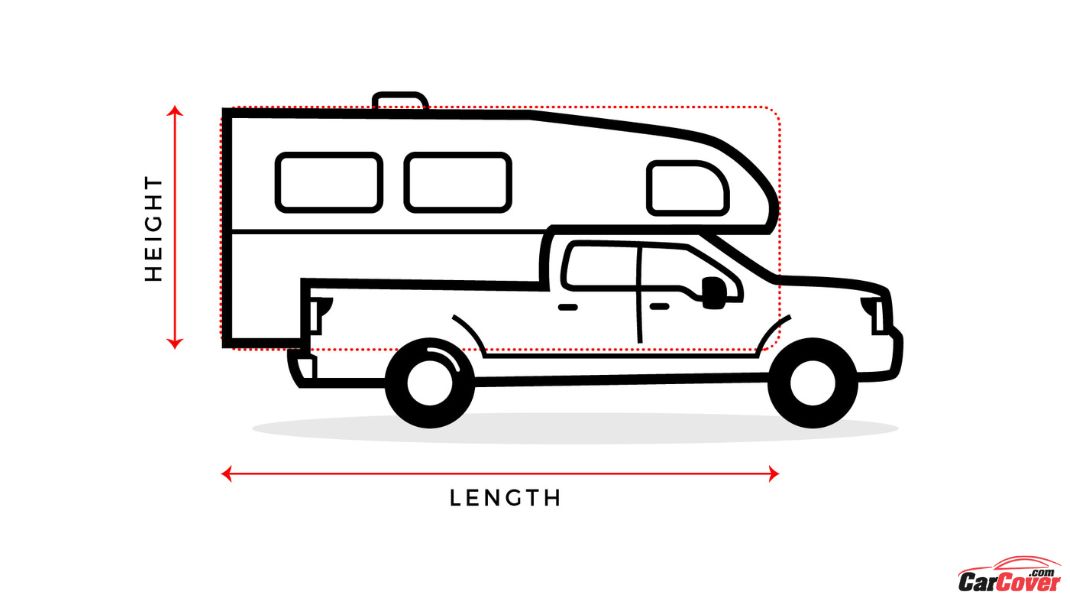

Folding Popup Camper
Length: Measure the longest two points from the front to the rear of the camper, including the spare tire and ladder. Always excluding the hitch and tongue of the camper!
Height: Measure the camper sidewalls from the highest point at the roofline down to the outside frame. Exclude ground clearance, roof-mounted accessories, vents, and A/C units. If your trailer does have an air conditioner, and the height measurement (excluding the A/C unit) is within 4 inches of the end of the scale given for the cover you are looking at, it is recommended that you go to the next bigger size to account for the air conditioner.
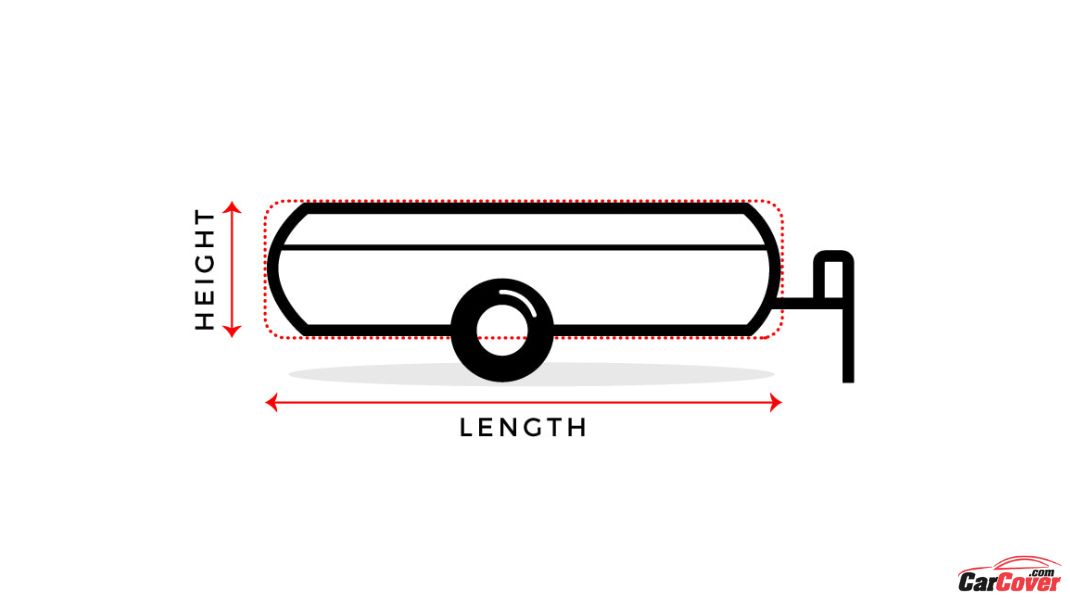

TearDrop Trailer
Length: Measure the longest two points from the front to the rear of the camper, including bumpers, spare tire, and ladder, but excluding the hitch and tongue of the trailer.
Height: Measure the camper sidewalls from the very top of the roofline down to the outside frame. Exclude ground clearance, roof-mounted accessories, vents, and A/C units.
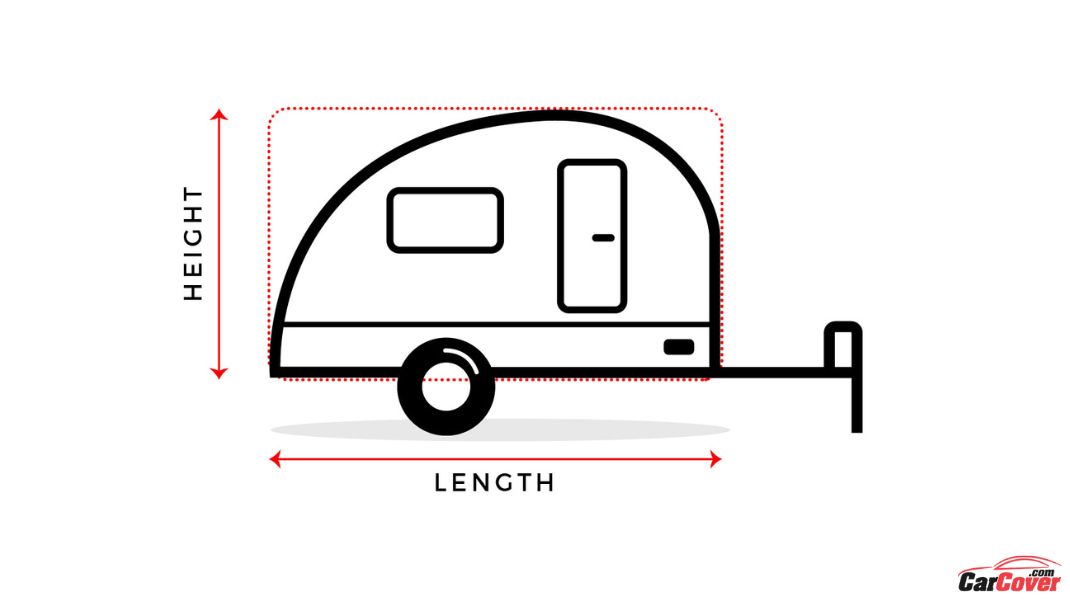

Now that you've carefully measured your recreational vehicle, it is just a matter of choosing the appropriate size range for those measurements and ordering your new RV cover!
In this blog, we covered why it is important to purchase a storage cover for your RV, why it is crucial for it to fit properly, and how to accurately measure your specific type of recreational vehicle for the perfect fit! Having a properly fitting cover not only provides damage protection from the unpredictability of the natural elements but also increases both the lifespan of the cover itself by reducing wear and tear to its fabric and the level of protection it provides by maximizing its functions of water resistance and condensation reduction. Moreover, ordering the right size cover the first time around by measuring the RV yourself saves you from the hassle of having to repack the cover and return it, which only lengthens the time that your RV is without protection.
